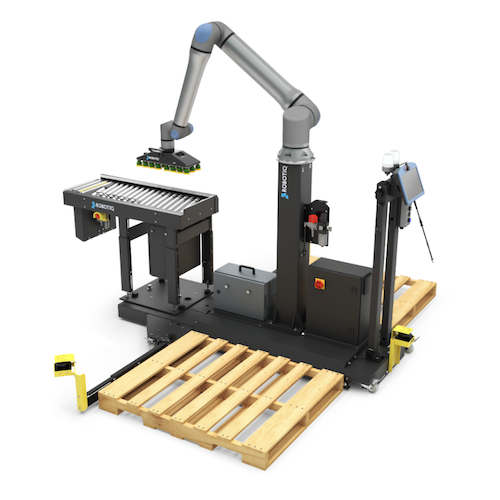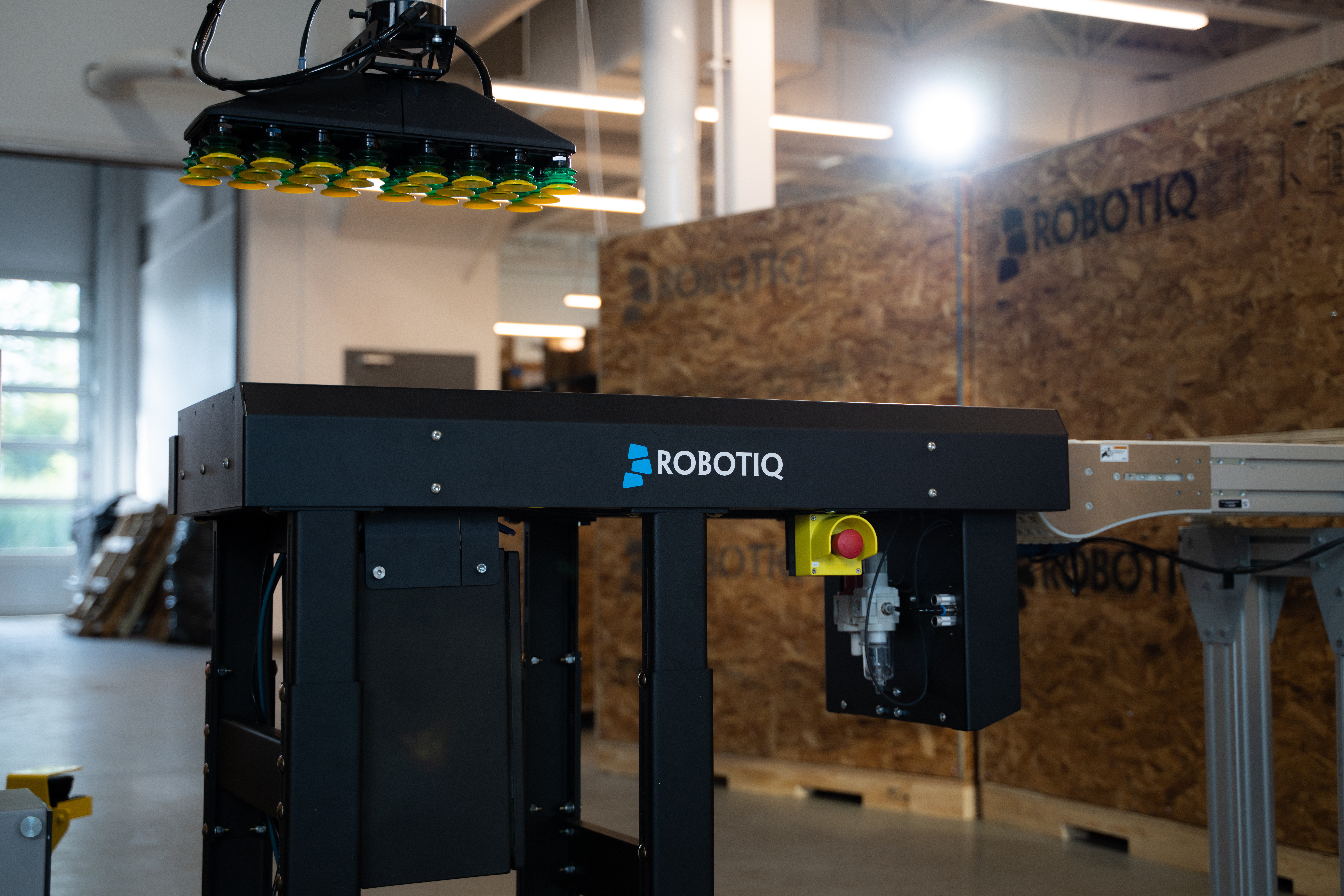10 Types of Pallet You Should Definitely Know About

Posted on May 03, 2022 in Palletizing
6 min read time
Are you looking to improve your palletizing process? Perhaps you are thinking of using pallet automation. You want to ensure you're using the right types of pallet for your task.
There are a surprising amount of different pallet types. Each has its own benefits and is suited to different tasks. Some specific pallets are required for particular applications or industries.
Are the pallets you are using are the right choice for your specific palletizing task?
Will your pallets be compatible with your automated palletizing solution?
What factors will determine if a particular pallet is right for you?
You will only be able to pick the right pallet by first understanding the differences between pallet types. Here, we present an overview of the various types of pallet you might encounter.
.jpg?width=732&name=Robotiq%20Palletizing%20Solution_068_Pallet_04-2021%20(1).jpg)
How many types of pallets are there?
There are dozens of different types of pallets. Maybe even hundreds! It all depends on how you categorize them.
People categorize pallets depending on what they need from the pallet and the structural properties of the pallet.
Examples of common pallet categories include:
-
Design — Is the pallet a stringer, winged, block, etc?
-
Lifting options — From which angle or direction can you lift the pallet?
-
Reusability — Is the pallet reusable or single use?
-
Material — What is the pallet made of? Wood? Plastic? Metal? If it's wood, is it hardwood or softwood?
-
Sizes — What are the dimensions of the pallet? There are different standard pallet sizes for EURO, ISO, UK, and some specific industries.
-
Country of origin — Pallets travel all over the world. Where they originate may affect their construction, size, and material.
-
Top deckboard design — How are the slats on the top of the pallet arranged? Are there gaps, no gaps, grids, or meshes?
-
Load capacity — How much load can the pallet hold? For example, hardwood pallets are stronger than softwood pallets.
When you combine these different categories, you can see how the potential number of different pallet types can be huge!
The key to picking the right pallet type for you
How can you tell which pallet will be most suitable for you?
It's helpful to start by asking yourself some general questions around your palletizing task.
Some useful questions to ask include:
-
What size, weight, and shape of objects are you loading onto the pallet?
-
What size of pallet will you need to achieve this?
-
What are the load restrictions of your lifting machines and/or transportation?
-
What material properties will you need your pallet to have?
-
What method of palletizing will you be using?
Finally, if you are using autonomous palletizing with a robot, does your palletizing solution support the pallets that you will use?
10 types of pallet you should definitely know about
It's helpful to be aware of the many types of pallet you might encounter.
This shows you the range of options available. It gives you a wider set of options, allowing you to choose the best pallet type for your specific task.
Here are 10 common types of pallet you should know about:
1. Winged pallets
Winged pallets are longer than they are wide. This creates an overhang, which is important to know about if you are automating your palletizing.
Some palletizing tasks require an overhang. Using winged pallets can be easier than trying to create this overhang in the robot's program.
2. Block (four-way) pallets
In block pallets, blocks placed between each layer of the pallet support the slats.
They are also referred to as "four-way pallets" because you can lift them from any side with your forklift.
3. Stringer (two-way) pallets
Stringer pallets have extra wooden supports compared to block pallets.
This extra support provides more strength to the pallet, but it means that you can only lift them from two sides. Therefore, they are referred to as "two-way pallets."
4. One-way (disposable) pallets
One confusing piece of terminology in pallet categorization is the word "way." With block and stringer pallets, the word "way" refers to the direction you can lift the pallet with a forklift.
One-way pallets are instead those that are only sent in one shipping direction. In other words, they are single-use, disposable pallets.
5. Return (reusable) pallets
The opposite of a disposable pallet is a reusable pallet. These are designed to be sent in two or more directions of a shipping operation — send and return.
Some pallets are multi-use and can be used again and again. This can make them more sustainable but also more expensive.
6. Nested pallets
Most pallets are stackable. You can pile them one on top of the other for storage when not in use.
Nested pallets occupy even less space when they are empty. These pallets, often plastic, stack tightly together.
7. Square winged pallets
Some types of pallet are specially designed for specific applications.
One example is square winged pallets. This type of winged has three legs and is designed to carry barrels or drums.
8. Heavy-duty oak pallets
A pallet's material will strongly affect its load capacity.
Oak pallets are an example of a heavy-duty pallet material. As a hardwood, they are tougher and more durable than the more common softwood pallets.
9. Heat treated pallets
Heat treatment is a common process during pallet production. Bugs and organic contaminants can infest organic materials, like wood. Heat treating helps to kill these, stopping them from spreading.
By law, most governments require wooden pallets to be heat treated before you can use them.
10. Steel pallets
While wood is the most common material for pallets, plastic and metal pallets are also suitable for various applications.
Steel pallets are more expensive than wooden pallets. However, they are strong, heavy-duty, reusable, and it's easier to keep them hygienic.
How to automate your palletizing task with a robot
Once you've picked which type of pallet you will use, how can you improve your palletizing operation even further?
Robotic palletizing is a highly popular application right now across industries. Companies just like yours are seeing the benefits of moving their palletizing operations out of the hands of human workers. Giving the task to a robot is more efficient, more consistent, and allows workers to move to more rewarding tasks.
For more information, check out our dedicated palletizing page.
What questions do you have about pallet types? Tell us in the comments below or join the discussion on LinkedIn, Twitter, Facebook, or the DoF professional robotics community.



-modified.png)


-2.jpg)

Leave a comment